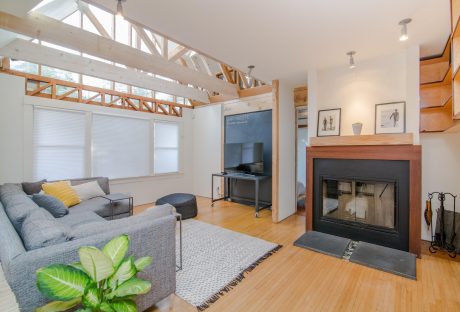Package ACs are generally used as an all-in-one HVAC system for spaces like homes, industrial sites, warehouses, and events that do not have enough space for a furnace or an air handler. They are available at fixed-rate capacities. Some package unit has a rating capacity of 3, 5, or 7 and highly rated ones like 10 or 15 tons. Though they are commonly used in homes and small spaces, package units are also suitable for restaurants, telephone exchanges, and bigger venues.
As the name suggests, all vital components found in a heating and cooling system are located in a single casing. All the crucial fixings, including the compressor, air handlers, cooling coil, and air filters, are housed in the unit, providing both heating and cooling capacities.
Here’s What Makes a Package Unit Different from Other ACs
One of the distinguishing features of a packaged air conditioner unit is the casing which is found on the outside of a house or building. The cabinet is directly connected to the existing ventilation system which circulates the chemical refrigerant inside.
This setup is different from typical air conditioners of most homes in the country where the coils are located in a separate unit and connected through the refrigerant line. Split-type ACs have their evaporator coils indoors while the condenser coils are found outside of the structure.
And because the unit is located outside the premise of a building, package units primarily act as space savers. They also offer the versatility of installation, especially for homes and buildings with limited backyard spaces. Package ACs can also be set up on the roof in the absence of suitable yard space.
Why Should You Opt for a Packaged HVAC Unit?
There are specific considerations when opting for package units rather than other cooling and heating alternatives. For one, a packaged AC offers convenient maintenance because all components are found in a single place. A technician only visits a single spot and services everything from there.
Packaged air conditioners also emit a significantly lower indoor noise compared to a split-type AC and other alternatives. A well-maintained unit will not make enough noise to disturb your family; thus, providing your family the tranquility and comforts of ideal living space.
Additionally, packaged air conditioners do not only provide sufficient cooling for small spaces, but they are also outfitted with heating coils. The combination of both an air conditioner and a central heating system removes the need for an additional indoor furnace.
Different Types of Packaged Units
There are several package units available in the market, and each has its advantages and flaws. As such, selecting the ideal AC unit has to go along with the area you live to avoid any inconvenience.
Package AC
A package unit has the air conditioner and air handler housed in a single casing. They can also be outfitted with heating capacities, so adding heating strips would provide you both with a cooling and heating system.
Gas and Electric Package Systems
This type of HVAC system runs on gas and combines the functions of an air conditioner and a gas furnace. This option is ideal for homeowners who do not have an existing heater.
Dual-Fuel Systems
If you live in an area where temperatures drop below negative three degrees, a dual-fuel system is the best HVAC system to install. It can turn your gas furnace on when the temperature drops the ideal warmth, helping you save on your utility bill.
Talk with a professional to help you decide on the ideal AC unit to outfit your home or warehouse. There are various types of package units with different capacities to outfit your space and give you the right warmth or cooling you need.
Read Also:






















